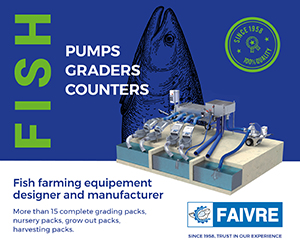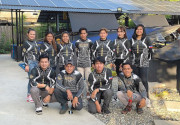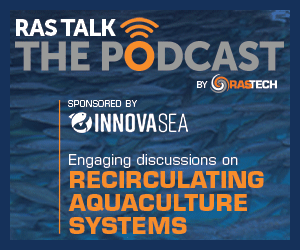| |
| |
 |
 |
| |
 |
|
@{mv_date_MMM d, yyyy}@ |
|
| |
 The Philippine government aims to boost food production during COVID-19 by providing urban dwellers aquaponics kits that will allow them to raise fish and grow vegetables. The country’s Bureau of Fisheries and Aquatic Resources (BFAR) has begun distributing 10 units of the aquaponics system to 10 beneficiaries in communities in the City of Naga, eight hours outside of the country’s capital of Manila, according to the Philippine Information Agency. Similar equipment were also delivered to Tuguegarao City, a municipality in the northeastern province of Cagayan.
» Read more
The Philippine government aims to boost food production during COVID-19 by providing urban dwellers aquaponics kits that will allow them to raise fish and grow vegetables. The country’s Bureau of Fisheries and Aquatic Resources (BFAR) has begun distributing 10 units of the aquaponics system to 10 beneficiaries in communities in the City of Naga, eight hours outside of the country’s capital of Manila, according to the Philippine Information Agency. Similar equipment were also delivered to Tuguegarao City, a municipality in the northeastern province of Cagayan.
» Read more
Adopting new technologies can improve efficiencies and increase productivity in aquaculture. Some of these innovations are starting to make their way into hatchery operations. We’ve identified some emerging tech trends that promise increased benefits to adoption.
» Read more
|
| |
 |
 |
| |
|
| |
 The AGRITEKTURA team members wear uniform shirts with sharp graphics in gray metallic hues, giving off this futuristic vibe. “You are what you wear,” the leader, architect Francis Neil Quijano, tells Hatchery International. They are bearers of what integration of science and technology can do to push the Philippines’ aquaculture industry forward to a sustainable future.
» Read more
The AGRITEKTURA team members wear uniform shirts with sharp graphics in gray metallic hues, giving off this futuristic vibe. “You are what you wear,” the leader, architect Francis Neil Quijano, tells Hatchery International. They are bearers of what integration of science and technology can do to push the Philippines’ aquaculture industry forward to a sustainable future.
» Read more |
| |
 As climate change and general concerns about the environmental impact of mass food production facilities increase, the aquaculture industry is looking inward and to scientific advances to improve operations, fish health and guarantee future growth. Hatcheries located within regions severely affected by climate change could face issues concerning flooding or lack of consistent groundwater sources. Those in more stable areas will be able to rely on technology and new advances in operations to keep things stable.
» Read more
As climate change and general concerns about the environmental impact of mass food production facilities increase, the aquaculture industry is looking inward and to scientific advances to improve operations, fish health and guarantee future growth. Hatcheries located within regions severely affected by climate change could face issues concerning flooding or lack of consistent groundwater sources. Those in more stable areas will be able to rely on technology and new advances in operations to keep things stable.
» Read more |
| |
 |
 |
| |
|
| |
Found throughout the Pacific Ocean, sablefish (or black cod) has a rich, buttery flavour and dwell near the bottom of the ocean during their adult life. In British Columbia, Canada, wild sablefish have been harvested off the west coast for many years. But commercial sablefish farming was only initiated about 15 years ago to fill a niche in the market for farmed, native species white fish that’s also well-suited to sushi. Today, sablefish aquaculture is a key industry in British Columbia where farming the species is quickly becoming a sustainable model.
» Read more
|
|
Bluefin tuna are a viable commercial species that command great prices, such that wild populations are overexploited to supply the lucrative sushi and sashimi markets. The Pacific bluefin tuna population is now just about three per cent of what it was when records started (circa 1930). Now, one U.S. firm is developing solutions to bolster the bluefin supply and remove limitations for closed-cycle bluefin farming in North America.
» Read more
| | |
|
| |

|
| |
|
| |

Mar. 30-31, 2022
Hilton Head Island, South Carolina, USA
» Read more
|
| |
| |











